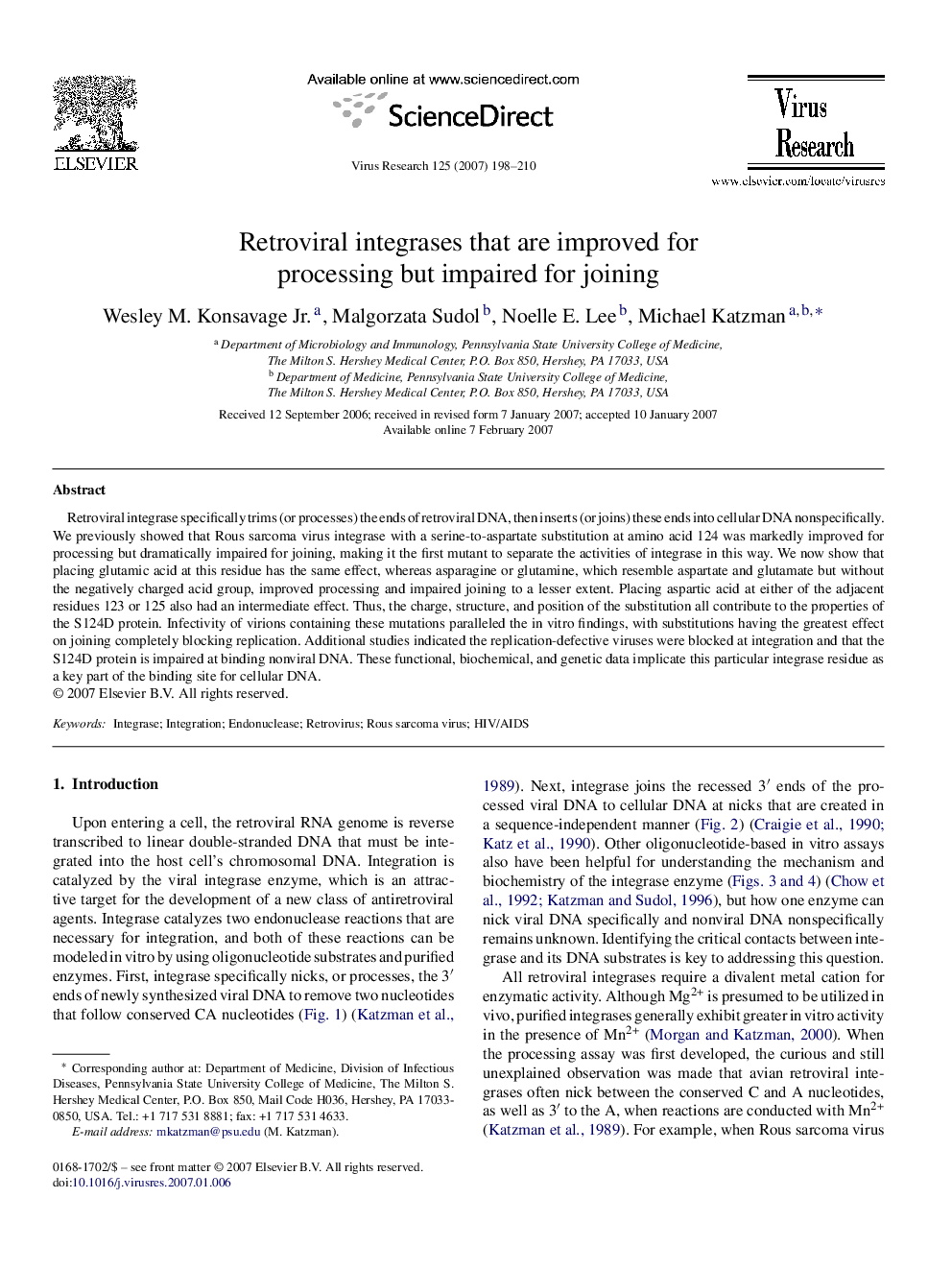| Article ID | Journal | Published Year | Pages | File Type |
|---|---|---|---|---|
| 3431032 | Virus Research | 2007 | 13 Pages |
Retroviral integrase specifically trims (or processes) the ends of retroviral DNA, then inserts (or joins) these ends into cellular DNA nonspecifically. We previously showed that Rous sarcoma virus integrase with a serine-to-aspartate substitution at amino acid 124 was markedly improved for processing but dramatically impaired for joining, making it the first mutant to separate the activities of integrase in this way. We now show that placing glutamic acid at this residue has the same effect, whereas asparagine or glutamine, which resemble aspartate and glutamate but without the negatively charged acid group, improved processing and impaired joining to a lesser extent. Placing aspartic acid at either of the adjacent residues 123 or 125 also had an intermediate effect. Thus, the charge, structure, and position of the substitution all contribute to the properties of the S124D protein. Infectivity of virions containing these mutations paralleled the in vitro findings, with substitutions having the greatest effect on joining completely blocking replication. Additional studies indicated the replication-defective viruses were blocked at integration and that the S124D protein is impaired at binding nonviral DNA. These functional, biochemical, and genetic data implicate this particular integrase residue as a key part of the binding site for cellular DNA.
